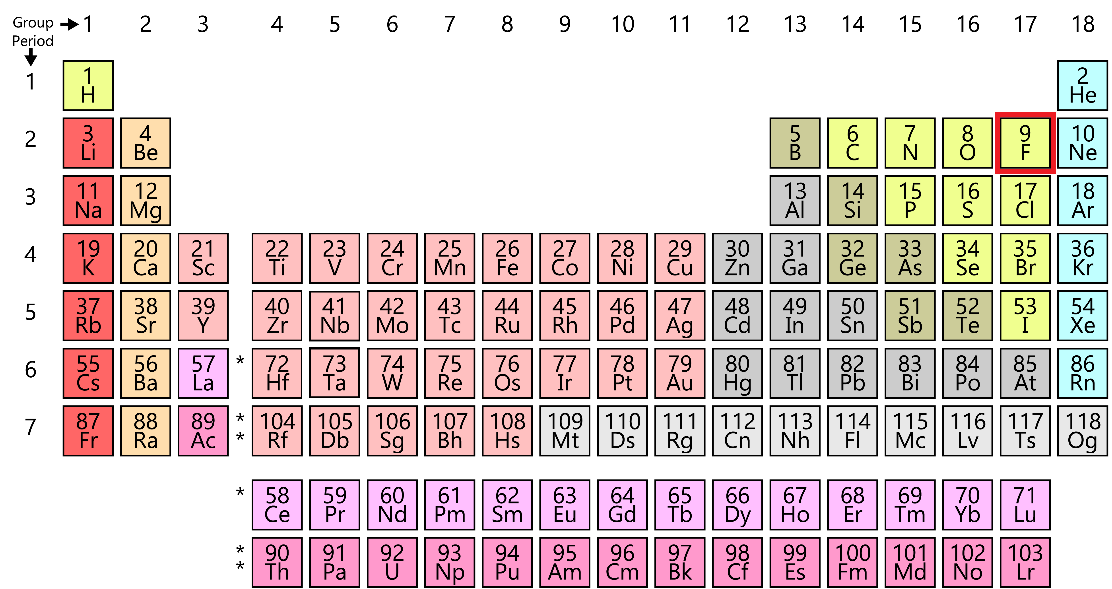
The atomic number of fluorine is 9. Explain the formation of the fluoride ion.
Answer
497.7k+ views
Hint: Consider the atomic number of fluorine and then formulate the possible electronic configuration of the atom. From this we can deduce how the fluoride ion will be formed.
Complete step by step answer:
The chemical representation of the fluoride ion is
We know that the atomic number of fluorine is 9 and the overall electronic configuration is 2, 7. The first orbital contains 2 electrons and the second orbital contains 7 electrons. 8 electrons are required in the second orbital to form a stable octet. The location of fluorine in the periodic table is:

Here, we can see that fluorine is present in the seventeenth group of the periodic table. We have already seen that fluorine requires one electron to form a stable octet. So, it takes one electron from any surrounding atom and completes its octet. The general reaction for the formation of the fluoride ion is:
Since, the fluoride ion is far more stable than the fluorine atom, energy is released while the formation of the fluoride ion. And the reaction that takes place is usually exothermic.
Note: Remember that fluorine is the most electronegative element and has an electronegativity of 4.0 on Pauling’s Scale of electronegativity. Thus, the phenomenon of the formation of a
Complete step by step answer:
The chemical representation of the fluoride ion is
We know that the atomic number of fluorine is 9 and the overall electronic configuration is 2, 7. The first orbital contains 2 electrons and the second orbital contains 7 electrons. 8 electrons are required in the second orbital to form a stable octet. The location of fluorine in the periodic table is:

Here, we can see that fluorine is present in the seventeenth group of the periodic table. We have already seen that fluorine requires one electron to form a stable octet. So, it takes one electron from any surrounding atom and completes its octet. The general reaction for the formation of the fluoride ion is:
Since, the fluoride ion is far more stable than the fluorine atom, energy is released while the formation of the fluoride ion. And the reaction that takes place is usually exothermic.
Note: Remember that fluorine is the most electronegative element and has an electronegativity of 4.0 on Pauling’s Scale of electronegativity. Thus, the phenomenon of the formation of a
Recently Updated Pages
Master Class 11 Economics: Engaging Questions & Answers for Success

Master Class 11 Business Studies: Engaging Questions & Answers for Success

Master Class 11 Accountancy: Engaging Questions & Answers for Success

Master Class 11 English: Engaging Questions & Answers for Success

Master Class 11 Computer Science: Engaging Questions & Answers for Success

Master Class 11 Maths: Engaging Questions & Answers for Success

Trending doubts
State and prove Bernoullis theorem class 11 physics CBSE

1 ton equals to A 100 kg B 1000 kg C 10 kg D 10000 class 11 physics CBSE

State the laws of reflection of light

One Metric ton is equal to kg A 10000 B 1000 C 100 class 11 physics CBSE

1 Quintal is equal to a 110 kg b 10 kg c 100kg d 1000 class 11 physics CBSE

Difference Between Prokaryotic Cells and Eukaryotic Cells




